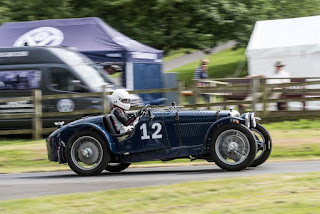In November 2018, South Africa will come alive to the sights and sounds of a grid full of 1930's Grand Prix cars for the first time in nearly 80 years.
The occasion is the South African Historic Grand Prix Festival which is being organised as a celebration of the iconic racers that originally participated in the South African Grands Prix in the 1930s.
In this era, the South African GP took place at the Prince George Racetrack in East London between 1934 and 1939. These races were supported by two further events, the Grosvenor GP in Cape Town and the Rand GP in Johannesburg, the trio of events creating a mini 'Winter Series' for European and British racing drivers of the day.
The UK organiser of the event, Speedstream Events, has undertaken considerable research to identify and trace as many of the original cars that participated in the South African events during the 1930's. The response has been tremendously positive, with several thrilling cars already committed to participating, including the Maserati 8CM with which Whitney Straight won the inaugural 1934 Grand Prix, the ERA which won the 1937 Grand Prix and the Riley Ulster Imp which finished second in the same event.
 |
| 1934 Maserati 8CM - Winner of the inaugural 1934 SA GP (3) Photo Credit - Dave Adams. |
Billed as a ‘once in a lifetime’ experience for the owners, the South African Historic Grand Prix Festival will comprise of three elements taking place between the 25th November and the 2nd December 2018.
The first leg, on the 25th November, is a commemorative race at the East London Grand Prix Circuit combined with a parade around the original 11-mile long Prince George race circuit. This will present a fantastic opportunity for vintage car and Grand Prix enthusiasts to see these cars being driven in anger in the country for the first time in 80 years.
 |
| 1935 ERA R4A - Winner of the 1937 South African Grand Prix (3) Photo Credit - Alan Cox |
The event will culminate in a two-day Grand Prix Garden Party close to Cape Town. This element will see the Grand Prix cars on display as well as being demonstrated, providing a further opportunity for the public to interact with the cars and owners in celebration of South Africa's proud history of hosting Grand Prix racing. The venue for this element will be confirmed in due course.
The Grand Prix Garden Party will be set in a high-end venue and offer ticket holders the opportunity to get up close to the cars in a relaxed environment. There will also be a limited number of VIP hospitality tickets available in the Drivers Club hospitality at both the East London race event and the Cape Garden Party which will provide a unique opportunity to mingle with the owners of the GP cars, as well as network with celebrities, motorsport heroes, and like-minded enthusiasts.
While preference will be given to entries where cars have authentic South African Grand Prix history, the ‘By Invitation Only’ event is also open to owners of age-related Grand Prix cars who may wish to participate in this once-off experience. Total entries are limited to 25 cars.
Click here to view our website and here to visit our facebook page
























